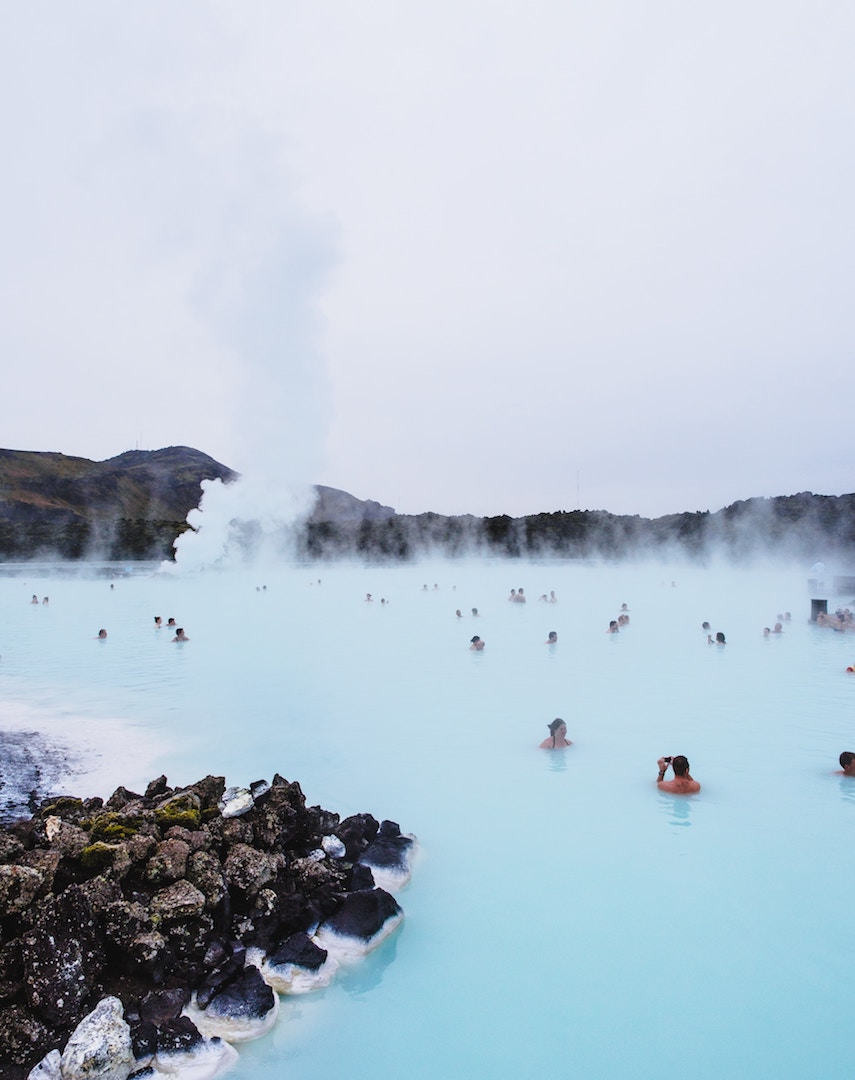Awe inspiring Iceland, full of natural wonder and geological diversity, is the perfect destination for those who love the natural world. No wonder the country, home to wild rivers and waterfalls, mountains, glaciers and geysers, is known as the Land of Ice and Fire. But with such variety, what are the top things to do in Iceland and where does one start when penning their itinerary? Well, we’re glad you asked; here are 5 natural wonders in Iceland ideal for nature lovers.
THE BLUE LAGOON
Head toward Reykjanes Peninsula in the southwest of the country, and you’ll soon come across The Blue Lagoon, a geothermal hot spring and one of Iceland’s most popular tourist attractions.
The Blue Lagoon is a stretch of milky blue water surrounded by lava fields. It maintains a constant and perfect bathing temperature of 102°F (39°C) all year round and locals and tourists alike come to bathe in these relaxing waters. It’s no surprise, then, that there are plenty of spa tours that feature the attraction.
Don’t come expecting a serene swim in privacy; celebrities such as Bjork, Rick Stein and Beyoncé have been spotted participating in the delights here. Basically, it gets busy, but it’s worth it; National Geographic has even named it one of the top 25 Wonders of the World. Thanks to being under half an hour away from Keflavik International Airport and the capital city of Reykjavik, many take this in first on their Icelandic excursion.

THE GOLDEN CIRCLE
One tour every visitor to Iceland should take is The Golden Circle; a 186 mile (300 km) circuit that takes you to three of the country’s most loved, must see destinations. These are:
- Geysir Geothermal Area – A 2-mile stretch of land featuring geysers that are 300 feet wide.
- Gullfoss Waterfall – The river Hvítá plunges over 150 feet into a crevice below.
- Þingvellir National Park – Believed to be where the country’s first parliament was located and now packed full of geological wonders.
The whole round trip can be done within about half a day if travelling from Reykjavik but many choose to take a little longer to fully appreciate the geographic wonder of the country. As well as the three attractions, there are things to do within the circle that you might want to try such as snowmobiling and snorkelling.
You can either drive the tour yourself via hire car or take a tour form an operator. Some offer a unique way to see these sights, including by helicopter or in the midnight hour. No matter you experience The Golden Circle, being awestruck is guaranteed.


ELDHRAUN LAVA FIELD
Formed in 1874, the Eldhraun Lava Field is 350 (565 km2) square miles of historical and geological importance, and rather than being the usual black, a green moss now grows across it. Beneath the ground, lava flows freely, making the field unsafe to walk in due to its fragility. Visitors instead use the paths provided to explore the field and to take pictures.

JOKULSARLON GLACIER LAGOON
Iceland’s southeast coast is home to a place so stunning that it has been used as the set of world famous productions and films, including James Bond’s Die Another Day and Tomb Raider. The Jökulsárlón, translating in Icelandic to ‘Glacier’s-River-Lagoon’, has been formed by a melting glacier and Europe’s largest, Vatnajökull. Blocks of ice that break away from the glacier float in the lake and melt or drift out to sea.
Interestingly for animal lovers, it’s not just people that come to see the lake but wildlife too, with seals and birds drawn to the waters in droves. The lake and glacier are part of the Vatnajökull National Park and is second in the region only to Yugyd Va Russia National Park in scope and scale. It’s about a five-hour drive from Iceland’s capital city, so if you’re flying into Reykjavík, you’ll need to factor in the second leg of the journey should you be short on time.

ASKJA VOLCANO
Head north of the Vatnajökull glacier, and you’ll come to the Askja Volcano, actually classed as a caldera due to its collapsed centre into which the magma that flows beneath results in a mountain range formed around that centre. This is just over a mile high with the crater covering an area of 30 square miles.
The eruption itself took place in 1975, with a power so intense that debris sprayed over 700 miles, landing in mainland Europe in the process. Over the next thirty years volcanic activity continued resulting in the crater that formed today. A fascinating history and one which will see out your trip to Iceland in style.





